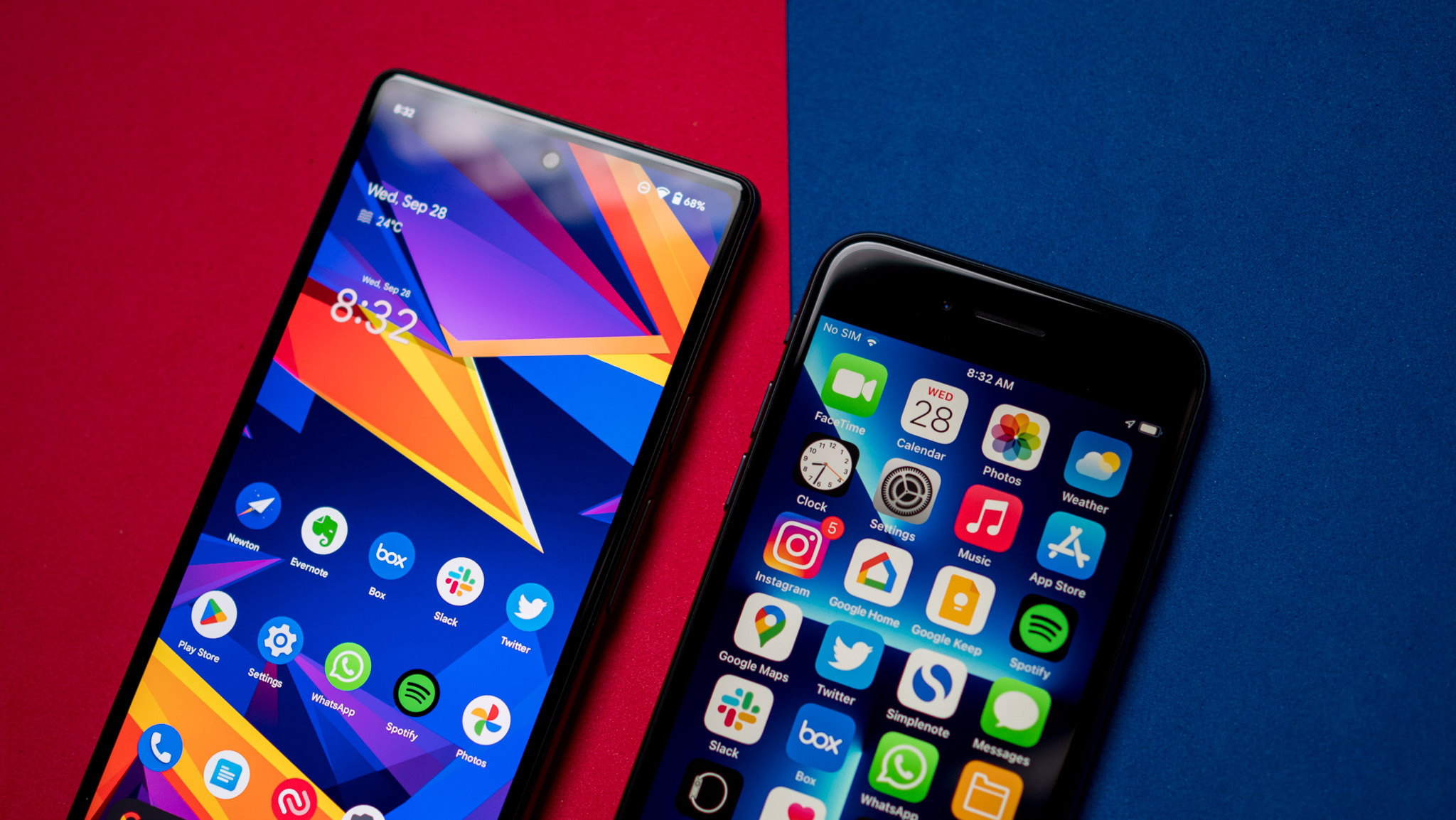Apple's next mistake could force some users to switch to Android
Apple might be moving on and leaving some behind.

What you need to know
- Apple is reportedly readying its fourth-generation iPhone SE for launch sometime in 2025.
- Rumors suggest that Apple will be ditching IPS LCD panels in favor of AMOLED displays.
- Modern OLED panels from companies like Samsung and Apple use flickering to control brightness, causing headaches, eye aches, and other problems for some users.
According to a report from ITHome (via Mac Rumors), the upcoming iPhone SE 4 will swap out the series' IPS LCD panel with an AMOLED display from Tianma. While this is good for overall display quality — OLED panels tend to have much higher display quality measurements than LCD panels — Apple is among a handful of companies that use something called pulse width modulation (PWM) to dim the brightness.
PWM dimming flashes the display on and off quickly to fool your eyes into thinking they're looking at a brighter or dimmer display, depending on how often the display is off during this cycle. While your eyes can't normally see this kind of flickering, human brains are known to perceive and process lots of information the eye can't "see," including flickering lights and displays.
As PWM dimming has become more commonplace, more and more users are reporting that these phones give them headaches, eye aches, nausea, and other issues that make it incredibly difficult (or impossible) to use the phones. Apple's own forums have been rife with complaints for years, only increasing in number as the company continues to switch to flickering displays.



Apple offers more vision accessibility options than Android, but flicker-sensitive users will be forced to switch if Apple keeps equipping new phones with flickering OLEDs.
Over the past few years, smartphones have continued to grow in size, much to the chagrin of a certain group of users. The best small phones often offer great experiences but tend to cut out certain "premium" components in order to fit everything in a smaller form factor. That often includes OLED displays, which are swapped out for IPS LCD panels instead, but even that's slowly starting to change.
While still unconfirmed, swapping out that LCD panel with an OLED panel would mark the first time Apple hasn't offered a phone with an LCD panel since the inception of the iPhone. Users who suffer from PWM or flicker sensitivity would then be forced to use an older, potentially unsupported iPhone or to switch to an Android phone that doesn't flicker as much.

Of course, this all depends on whether or not Apple actually makes the switch to OLED and if it begins to offer users more vision accessibility options than are currently offered. Apple has been extremely good about offering lots of accessibility options, including plenty of new ones in iOS 17, which is due to release next month.
Apple currently offers a "reduce white point" option on its phones that reduce the intensity of the display, helping some flicker-sensitive users. Android offers something similar called "extra dim," but it's a less nuanced setting as it's a simple on/off toggle, while iPhones offer a slider so users can set the intensity level to what is comfortable.
Get the latest news from Android Central, your trusted companion in the world of Android
Some smaller Android phones, like the Zenfone 10, offer proper DC-dimmed OLED displays in a comfortable form factor.
Extra dim also doesn't fix phones that flash more harshly, like the Galaxy S23 Ultra, some of the latest and best foldable phones, or any Google Pixel phone, since it doesn't actually reduce the amount of flickering that takes place.
I recently wrote about how recent Samsung phones flicker so badly that they make me want to curl up into a ball. Apple's flickering iPhone displays flicker twice as fast as Samsung phones, but that 480Hz flickering rate is still considered very low. Some Android phones, like the Honor 90, flicker at a rate of 3,840Hz.
But the best flicker-free Android phones, like the Motorola Edge Plus (2023), utilize DC dimming at high brightness to keep the display from flickering. And other companies like Asus offer the Zenfone 10, a small phone that offers DC dimming options at 60Hz, huge batteries, cutting-edge processors, and great cameras.
So instead of looking at a strobe light all day and potentially harming your eyes long term, users like myself are starting to switch to companies that take eye health more seriously.

Need a high-powered phone that isn't too big and won't hurt your eyes? The Asus Zenfone 10 might be just the thing you've been looking for with its cutting-edge processor, huge battery, great cameras, and flicker-free display.

